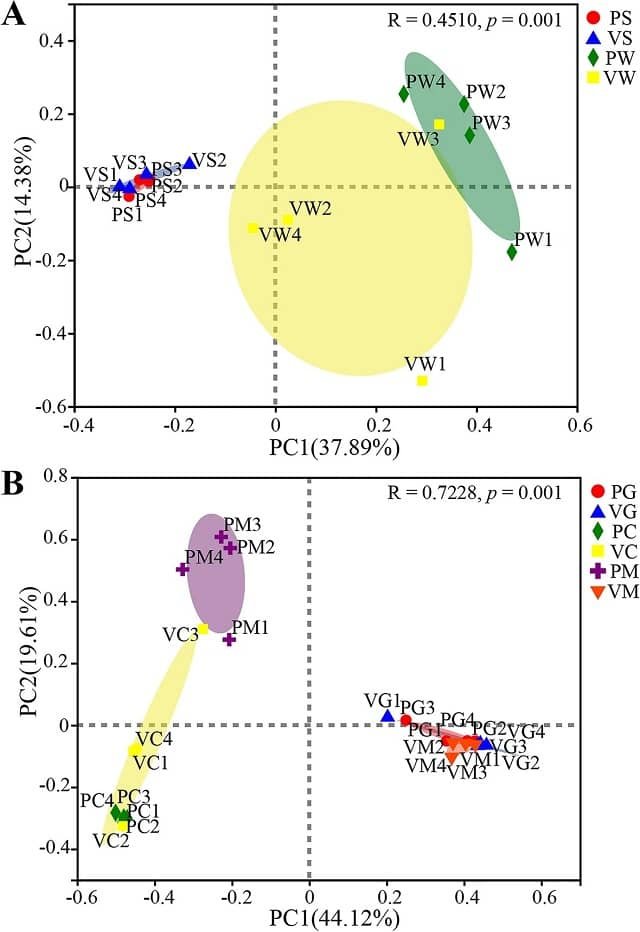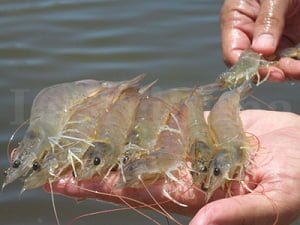
by Liu Jia, Chinese Academy of Sciences
As an effective method of preventing a wide range of bacterial diseases, vaccination plays a key role in aquaculture disease control, contributing to its environmental, social, and economic sustainability. In particular, vaccines based on inactivated bacterial pathogens have been proven highly effective for fish.
After millions of years of coevolution, symbiotic microbiota has become an integral part of fish and plays an important role in fish immunity, metabolism, and health. Given the ability of vaccines to enhance immune function, the fish intestinal microbiota is likely an important, underappreciated factor in vaccine development. However, little is known about the effect of vaccination on fish symbiotic microbiota, especially mucosal microbiota, and its correlation with intestinal metabolism remains unclear.
Recently, a research team led by Prof. LI Aihua from the Institute of Hydrobiology (IHB) of the Chinese Academy of Sciences illustrated the effect of vaccination on tilapia symbiotic microbiota, and found that significant alterations of intestinal symbiotic microbiota mediate changes in intestinal metabolism. This study was published in Microbiome.
Using 16S rRNA gene high-throughput sequencing and gas chromatography-mass spectrometry metabonomics, the researchers compared the differences in the gill and gastrointestinal microbiota and intestinal metabolites of tilapia between the control and immunized groups. The results showed that vaccination has a significant effect on the structure and composition of intestinal mucosa-associated microbiota, but has no significant effect on the gill and stomach mucosa- and gastrointestinal digesta-associated microbiota.
In addition, the researchers found that the contents of serum globulin and lysozyme, globulin ratio, the activity of superoxide dismutase, and the antibody titer were significantly higher in the immunized group than those in the control group. The relative abundance of potential opportunistic pathogens such as Aeromonas in the intestinal mucosae of tilapia in the immunized group is significantly reduced. Given that the gut is the main route for most pathogenic bacteria to infect fish, this protective mechanism of vaccines may be important.
The researchers further discovered that the concentrations of carbohydrate-related metabolites, such as lactic succinic acid and gluconic acid, are significantly increased in the intestinal tract of the immunized group, while the concentrations of various metabolites related to lipid metabolism are significantly decreased in the intestinal tract of the immunized group.
Correlation analysis showed that intestinal microorganisms, such as Enterovibrio, Macellibacteroides, Ralstonia, Pirellulaceae, Desulfomonile, Enhydrobacter, Crenothrix, and Bosea, were significantly correlated with differentiated intestinal metabolites after vaccination. These results suggested that vaccination affects the metabolic function of the tilapia gut, which was closely related to changes in gut microbes.
This study revealed the microbial and metabolic responses induced by inactivated vaccination, suggesting that intestinal microbiota might mediate the effect of vaccination on the intestinal metabolism of tilapia. The intestinal microbes and metabolites that increased significantly after vaccination might serve as valuable indicators for probiotics or prebiotics development to enhance vaccine efficacy against vaccinated fish.
Stay Always Informed
Join our communities to instantly receive the most important news, reports, and analysis from the aquaculture industry.
Reference (open access)
Zhenbing Wu et al, Significant alterations of intestinal symbiotic microbiota induced by intraperitoneal vaccination mediate changes in intestinal metabolism of NEW Genetically Improved Farmed Tilapia (NEW GIFT, Oreochromis niloticus), Microbiome (2022). DOI: 10.1186/s40168-022-01409-6
Editor at the digital magazine AquaHoy. He holds a degree in Aquaculture Biology from the National University of Santa (UNS) and a Master’s degree in Science and Innovation Management from the Polytechnic University of Valencia, with postgraduate diplomas in Business Innovation and Innovation Management. He possesses extensive experience in the aquaculture and fisheries sector, having led the Fisheries Innovation Unit of the National Program for Innovation in Fisheries and Aquaculture (PNIPA). He has served as a senior consultant in technology watch, an innovation project formulator and advisor, and a lecturer at UNS. He is a member of the Peruvian College of Biologists and was recognized by the World Aquaculture Society (WAS) in 2016 for his contribution to aquaculture.




